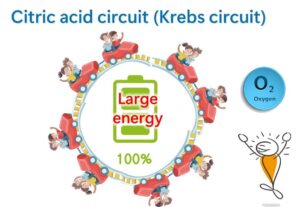In microbiology, one of the fundamental lessons is distinguishing between cocci and rods. But have you ever wondered why Gram-negative bacteria in food microbiology are predominantly rod-shaped? This article explores the fascinating reasons behind bacterial shapes, from nutrient uptake to environmental adaptation, revealing why cocci are rare among Gram-negative bacteria.
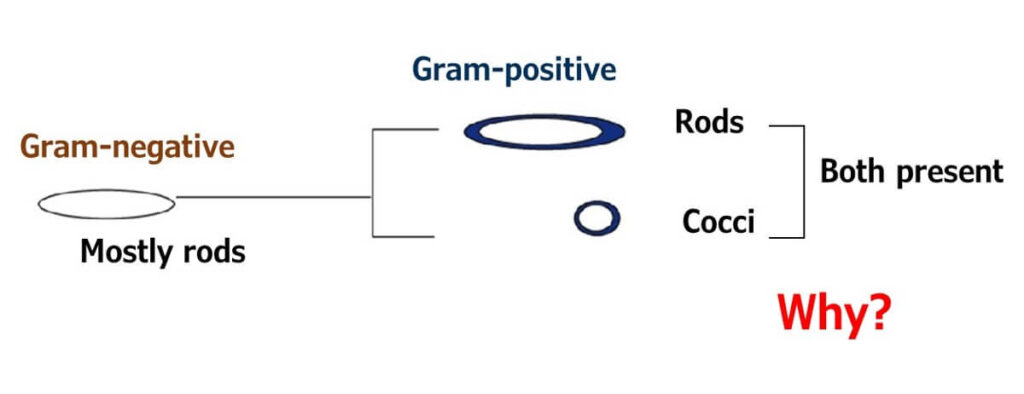
Why Are Gram-Negative Bacteria in Food Microbiology Mostly Rods?
In reality, Gram-negative cocci do exist, but they are primarily associated with clinical fields, such as sexually transmitted diseases, rather than food microbiology.
- These bacteria are rarely isolated from food samples.
- Misidentifying Gram-negative bacteria in food as cocci can lead to incorrect identifications.
Therefore, in food microbiology, it is practical to understand that all Gram-negative bacteria are rods. This distinction reduces the risk of errors and reflects the natural adaptation of Gram-negative bacteria to aquatic environments.
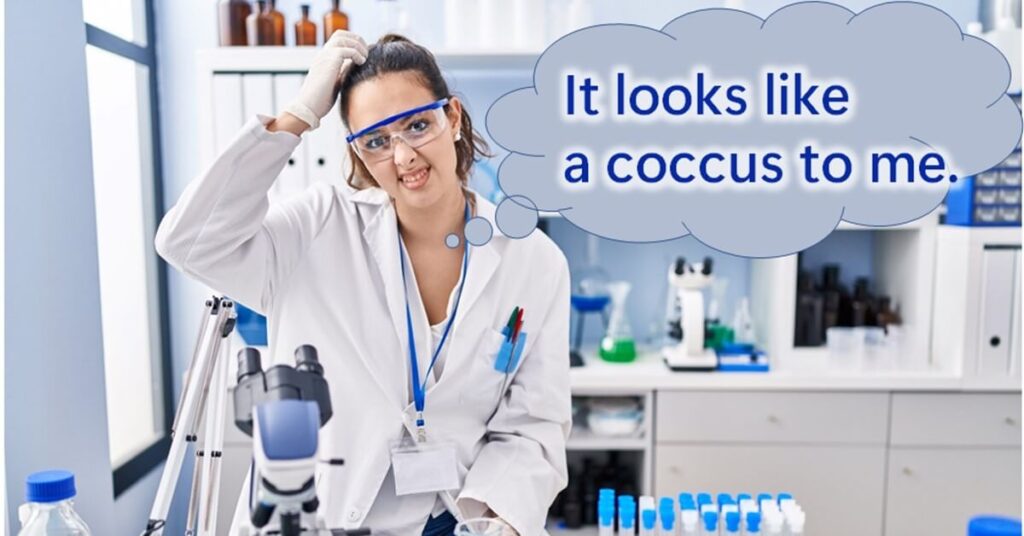
Why Biological Shape and Size Influence Microbial Adaptation
Now, let's explore why certain bacteria take on a cocci or rod shape. Understanding the biological significance of these bacterial shapes helps explain their adaptation to different environments and functions. To do this, it's helpful to understand the relationship between the surface area and volume of living organisms. Let's pose a question to you:
- Why do we not see dog-sized cockroaches?
If cockroaches were the size of dogs and running around our daily lives, it would be quite problematic. However, in reality, such giant cockroaches do not exist. The reason lies in how cockroaches obtain oxygen through their body surface. Let's compare cubes with side lengths of 1 cm and 10 cm. What happens to the ratio of surface area to volume as the cube's size increases? As illustrated in the diagram below, the larger the cube becomes, the lower the ratio of surface area to volume.
When cockroaches reach the size of dogs, the surface area to volume ratio becomes too low for efficient oxygen uptake through their body surface. This limitation slows their movement and eventually makes survival impossible at larger sizes.
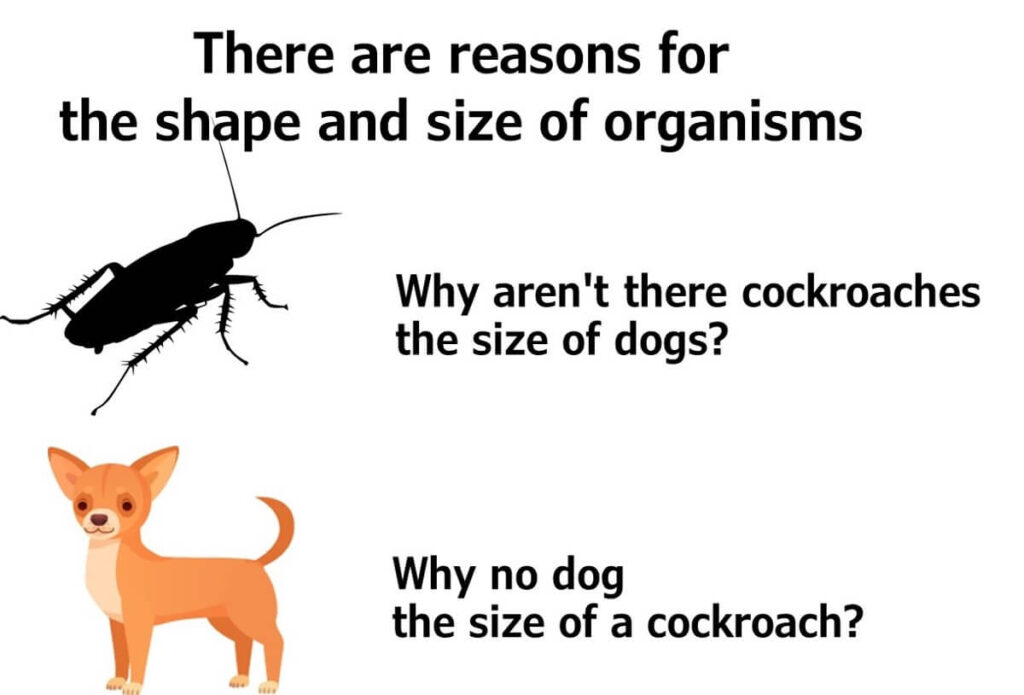
Now, let's move on to the next question:
- What would happen if dogs were the size of cockroaches?
This question can also be explained through the relationship between surface area and volume. Since dogs are mammals that need to maintain a body temperature of around 37°C, a smaller body would result in a larger ratio of surface area to volume, leading to more heat loss from the body surface. Therefore, for mammals that need to maintain body temperature, it is more advantageous to have a larger shape that minimizes the surface area to volume ratio.

Also, how about the next question:
- Why do we not see long and slender mammals like snakes?
Why don’t we see long and slender mammals like snakes? The reason lies in heat loss and body temperature regulation. Mammals with elongated bodies would lose heat rapidly due to their larger surface area relative to volume, making it difficult to maintain a stable body temperature.
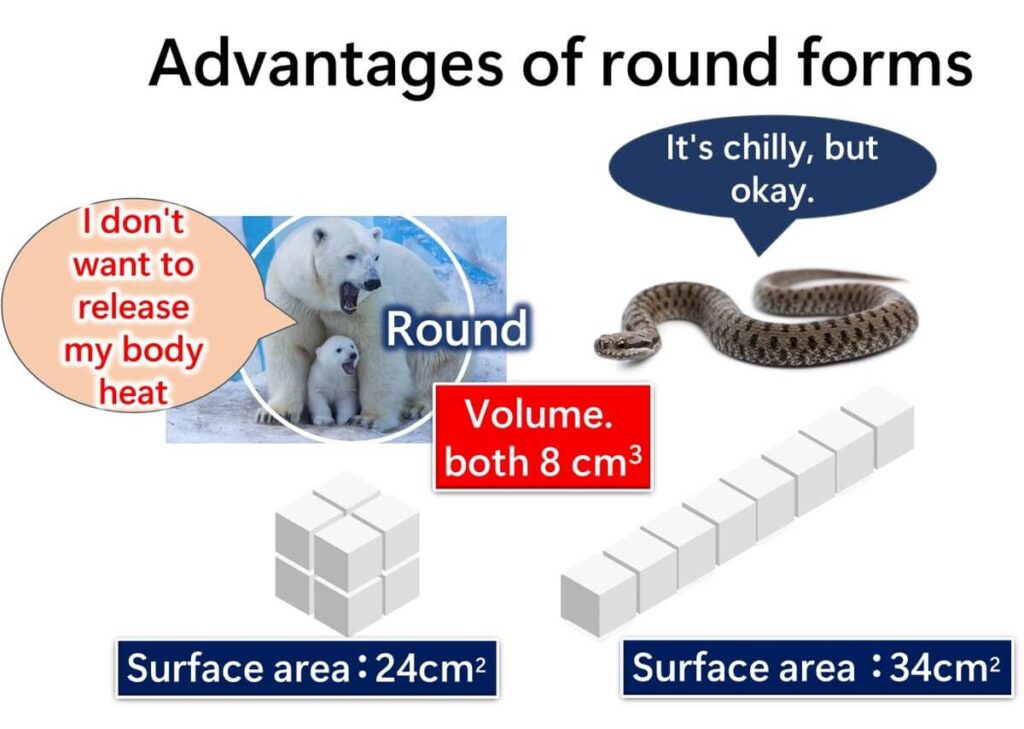
Let's imagine for a moment that mammals did have long and slender shapes, similar to snakes. What would happen? A long and slender body shape means a larger surface area compared to volume. As a result, these mammals would lose heat more rapidly through their skin. For mammals that need to maintain a stable body temperature, this body shape would not be ideal. To preserve body heat, mammals have evolved to minimize their surface area in relation to their volume, leading to a rounder body shape.
However, for snakes, the story is different. Their elongated shape creates a larger surface area relative to their volume, resulting in increased heat release. For snakes, this characteristic is not a disadvantage since they do not need to maintain a specific body temperature like warm-blooded mammals do.
The Difference between Cocci and Rods and their Meaning
Having grasped the concept of surface area and volume in biology, let's return to the main topic of bacteria's cocci and rods. For microorganisms, the important factor is not oxygen intake or body temperature but the efficiency of nutrient uptake.
As we discussed earlier, spherical objects have the smallest surface area. On the other hand, flattened or elongated shapes result in a larger surface area. Therefore, rod-shaped bacteria have a larger surface area than cocci. In terms of nutrient uptake, this is beneficial for rod-shaped bacteria. In relatively calm environments where bacteria can efficiently reproduce, the rod shape is more advantageous. Therefore, in water environments, which is the habitat of most Gram-negative bacteria, understanding them as rods is practical.
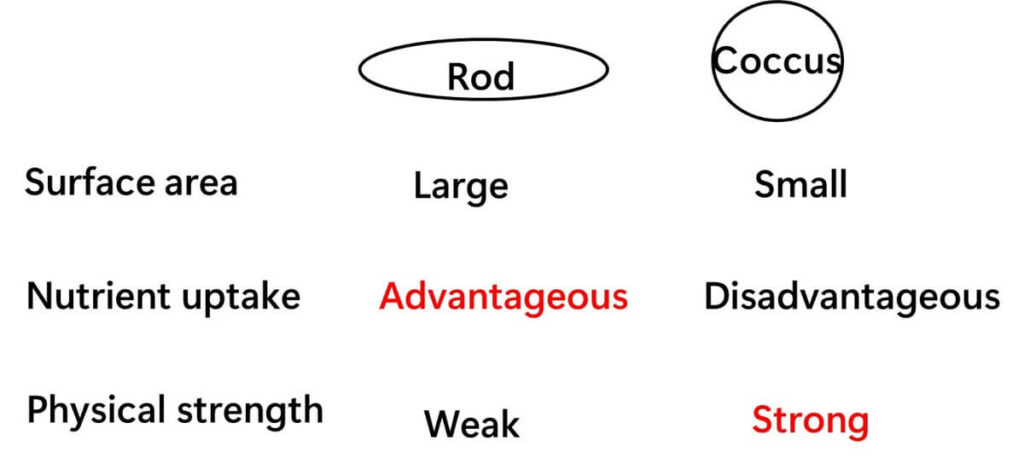
On the other hand, in harsh environments, such as those on land where bacteria need to protect themselves from various physical stresses, a spherical shape is advantageous. Typical examples of land-adapted Gram-positive bacteria like Staphylococcus and Micrococcus are cocci. In the chart of Gram-negative bacteria, we have shown that only rods are present among the major Gram-negative bacteria in food microbiology. However, in Gram-positive bacteria, both cocci and rods are present. Let's take a look at the evolutionarily advanced bacteria that adapted to land environments and possess heat-resistant endospores, such as Bacillus and Clostridium. These bacteria actively divide as rods during the vegetative stage. However, their heat-resistant spores are always spherical.

Conclusion
From these examples, we can begin to discern the significance of cocci and rods in bacteria. Generally speaking, in harsh environments such as those on land, bacteria tend to be cocci, while in environments where physical stress is less pronounced and nutrient uptake is prioritized, bacteria tend to be rod-shaped. Considering that most Gram-negative bacteria inhabit water environments, it becomes clear that many of them are rods.
In conclusion, we have discussed the merits and disadvantages of the cocci and rod-shaped forms in microorganisms. It is essential to remember that this classification is somewhat generalized and may not apply to every single bacterium. However, the most crucial takeaway is to gain a deeper understanding of microbiology. Rather than mechanically memorizing whether each bacterium is cocci or rod-shaped, it is more efficient to associate their characteristics with their shapes. This is why we chose to write this article, to encourage a more comprehensive understanding of microbiology.

